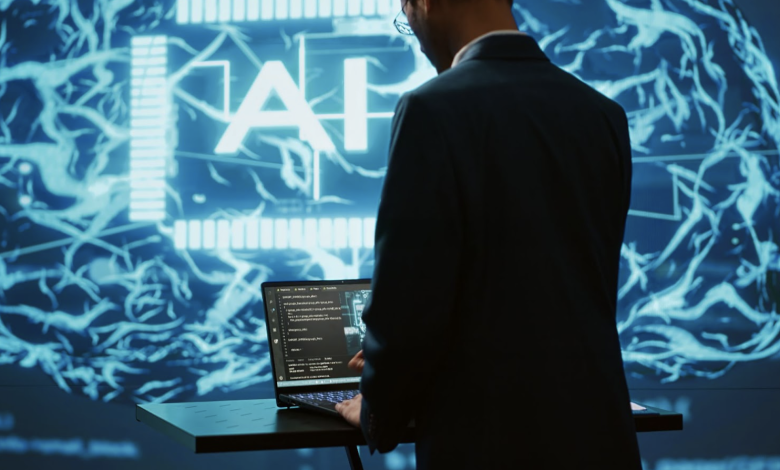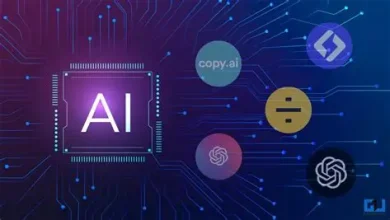
Every major technology shift sparks the same question: will this replace jobs or will it create new ones? Artificial intelligence is no different, and tension is highly visible in today’s workplace. The headlines often focus on displacement – on fears that all algorithms and machines will eventually take over roles people have held for decades, but when we look beyond the hype and into real-world use cases, a different picture begins to emerge.
From my point of view, as a leader building AI-powered technology, the most powerful impact of AI is not wholesale replacement, but augmentation. The ARMOR® service uses AI to analyze complex call data and help clients adjust strategy to optimize answer rates and performance. Before this technology, teams were left guessing – or manually digging through data – to understand shifts in answer rates and why numbers were being mislabeled as spam. Now, AI can surface insights and recommendations automatically, so teams spend less time troubleshooting and more time engaging their customers.
That single example mirrors a broader story across industries. AI is removing drudgery, not human relevance. Sure, it will eliminate some repetitive, rules-based tasks, and roles will undoubtedly evolve. But it’s also creating new opportunities, such as data quality specialists, compliance analysts, prompt engineers, and operational strategists who bridge the gap between human judgment and machine efficiency. For companies, the key isn’t to resist change but to prepare their people for it.
The Nature of Work is Shifting, Not Disappearing
We have been here before. When the steam engine arrived ages ago, there were major fears about mass unemployment. Instead, it unlocked new industries and opportunities that completely reshaped the economy. The exact same thing can be said about electricity, the computer, and the internet. AI is simply the latest in that lineage of transformative tools.
What makes AI so unique and exciting is its ability to work alongside humans in a more cognitive domain. As we know, machines can now read, write, analyze, and even converse. But rather than erasing the need for people, this type of capability often raises the bar for human contribution. If a model can generate a first draft in seconds, the human role becomes about editing, contextualizing, and ensuring relevance. If AI can spot patterns in customer data, people are freed to design campaigns, strategies, or experiences around those insights.
Preparing People Through Reskilling
Reskilling, transparent communication, and showing employees how AI helps them win are incredibly critical. Workers need to see AI as a partner that extends their capabilities, not a rival threatening their livelihood. Done right, this shift doesn’t just preserve jobs but transforms them into higher-value, future-ready roles.
At ARMOR®, when clients adopt our AI-driven analytics, we don’t simply hand them new data tools. They learn to interpret insights, connect them to measurable outcomes like answer rates or compliance enhancement, and act with confidence. Employees who once spent hours reacting to problems now anticipate and prevent them, moving from task execution to strategy and performance optimization. AI isn’t replacing their roles; it’s helping them perform better.
The biggest takeaway applies everywhere. The best reskilling programs are not only about technical competence but also about confidence. Employees must feel empowered by AI, not diminished by it.
Transparent Communication Builds Trust
Another essential piece is communication. Too often, leadership announces a new AI initiative without explaining the “why” behind it. That’s when rumors spread and morale drops. Transparency flips the script. When people understand that AI isn’t there to judge or replace them, but to make their jobs easier and allow them to focus on higher-value interactions, adoption follows naturally.
For example, in customer service environments, AI can handle many routine inquiries, which can sound threatening to human agents. But when companies communicate openly about the shift and reskill their teams to focus on complex or relationship-driven work, the picture changes completely. AI takes care of repetitive requests while people handle the conversations that require empathy, problem-solving, and judgment. In the end, everyone benefits. Employees feel trusted, customers have better experiences, and feedback scores reflect the difference.
AI as a Partner in High-Value Work
Workers need to see AI as a partner that helps extend their capabilities, not a rival threatening their livelihood. This reframing is crucial and if done right, the shift doesn’t only preserve jobs but transforms them into higher-value, future-ready roles.
Consider the healthcare use case in which AI acts as an intelligent scribe, transcribing patient visits, drafting clinical notes, checking for omissions, or prepopulating records. Doctors then review, refine, and own the final record. In doing so, AI frees them from rote typing and administrative burden, giving them more time to listen, diagnose, counsel, and care. In this case, AI amplifies what physicians do best – the judgment, empathy, explanation, and guidance that no algorithm can replace.
Pitfalls to Watch Out For
The path forward is full of potential, but also risk. One of the biggest risks is overconfidence in AI outputs. When leaders or teams accept model recommendations without question, small errors can scale into major consequences. Another is bias. Systems trained on flawed data can amplify inequities rather than reduce them. And finally, there’s the cultural risk of alienating employees if change is imposed instead of built together.
AI is powerful, but never infallible. Avoiding these pitfalls requires humility, transparency, and constant oversight. The best leaders treat AI as an advisor, not an authority, and ensure accountability always rests with humans.
The Workforce of the Future
The workforce of the future won’t be human or AI alone. It will be human with the help of AI, and the organizations that embrace this collaborative approach will be the ones that thrive over time.
Some roles will inevitably be automated as AI becomes more capable. But history shows that as technology reshapes work, it also creates new kinds of opportunity. As companies grow, demand expands, jobs evolve, skills shift, and entirely new opportunities and fields emerge.
The goal isn’t to replace people with machines. It’s to boost productivity and satisfaction by letting AI handle repetitive or data-heavy work, freeing people to focus on creativity, strategy, and connection. When workflows are designed so both bring their strengths, teams become faster, smarter, and more resilient together than either could be alone.
Where We Go From Here
Every era of technological change has come with uncertainty, and AI is no different. But if history is any guide, augmentation will outlast automation. The question leaders should ask isn’t “What jobs will AI replace?” but “How do we prepare our people to succeed in partnership with AI?”
The answer lies in reskilling, transparent communication, and a commitment to showing employees how AI helps them win. When organizations invest in people this way, they don’t just preserve jobs – they unlock new forms of growth, opportunity, and innovation. The gains in productivity and capability create space for entirely new roles, industries, and ideas to emerge. With the right approach, the workforce of tomorrow won’t just survive. It will thrive.
Author
Chris Sorensen, CEO of ARMOR® & PhoneBurner




